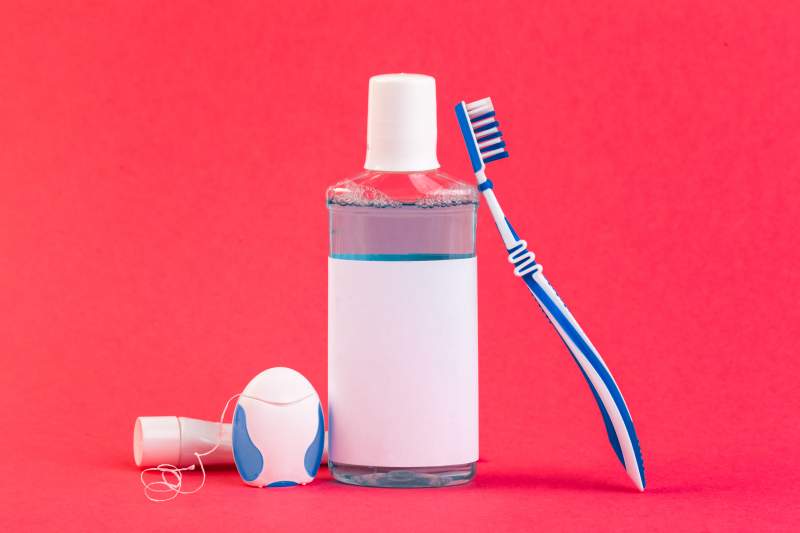Do you know that tooth aches, decay and abscess are caused by poor oral hygiene? But brushing everyday does not mean you are totally saved from plaque and other bacteria that cause these diseases. If you do not add regular flossing to your routine then you are exposing your teeth to great dangers.
Flossing, experts believe; helps to remove plaques and food debris that escape your toothbrush during brushing. Unlike your brush that cleans only the surfaces of your teeth, water flossing goes the extra mile to remove dirt from the tight spaces between your teeth. This helps you maintain clean teeth, healthy gums and get rid of bad breath so you can have that confident smile you always wanted.
What Is Flossing and What Are Its Benefits?

Flossing is simply an activity that involves the use of dental floss, (a string-like material) to scrape through and clean the teeth in a bid to removing plaques and food debris stuck there. Flossing is encouraged to be undertaken at least once a day and recommended for adult and children alike as part of their oral hygiene routine. Some of it benefits as outlined below includes:
- Flossing regularly eliminates the build-up of interdental plaque.
- It helps to prevent tooth and gum disease like gingivitis, tooth ache, periodontitis etc.
- It helps your teeth to stay white and healthy
- Flossing limits visits to the dentist office for treatment of teeth problems. This therefore helps you save on consultation and treatment fee.
- With regular flossing, mouth odour is not a problem.
Why Water Flossing May Be the Best for You
Although different studies have conflicted where it concerns the best method for flossing, we want to believe that whichever way seem the easier for any one individual should be adopted them. Why? It doesn’t make sense to stick to the traditional form of string flossing if you find it complex and rather hard to manipulate or stick to water flossing if you think it is messy and ineffective.
But you should note that when string flossing is inappropriately done, you may end up not achieving the expected result but instead cause wounds to your gums. Dental or traditional flossing involves the use of both hands to carefully manipulate the string through the teeth gaps. For this reason, you should have to hone your skills and master the act by regularly carrying it out.
However, using a water flosser doesn’t require any skill acquisition; it is as easy as plugging in the device, picking a tip that works for you and controlling the pressure of water while you floss. Below is a guideline:
How To Use The Water Flosser?
- Buy your desired water flosser brand from any online store or grocery store near you. Waterpik is highly recommended.
- Endeavor to floss near a sink so as to enable the water flow out and not wet you.
- All water flosser brands comes with a water reservoir that contains the water, fill it with lukewarm water and fix tightly to the unit.
- Pick a tip and attach it to the unit. There are different tips performing distinct function to choose from.
- Bend over the sink before putting the tip into your mouth and close it lightly over the tip. This is to avoid water from gushing out unto your cloth.
- Plug in the unit, set the pressure starting from low to high, switch it on and start flossing.
- Work your way from the base of your teeth to the front and then up. Linger more on teeth gaps so as to flush out stubborn plaques. Spend 10-15 minutes on this.
- Once it is done, turn off the unit and pour out any leftover water. Eject the tip and keep unit in a safe and dry place for next use.
From the above you can see that working a water flosser is very simple and if you do it right; you wouldn’t splash water on your body at all. And if you need to invest in one today, you need the very best water flosser for a comfortable flossing. What’s more, it is very effective and efficient in removing plaques and food debris stuck in your teeth and can be done easily in the bathroom after brushing and bathing.
Other benefits of water flosser include:
It is safe for use with orthodontic appliances like braces, crowns and bridges. It is the most convenient flossing method when wearing any of these because it does not tamper with their positions but help to effectively clean around it.
It promotes healthy gum: The energetic effect of the water not only removes plaques and all but massages your gum along the way. Besides, the situation where your gum bleeds because of inappropriate use of string floss is avoided. Water isn’t sharp enough to cause gum bruises.
Water flossing reaches the deep and far corner of your teeth and gum: Places where your toothbrush and floss cannot reach, the power of water penetrates there and unearths plaques before they accumulate into tartar and cause gum diseases such as gingivitis and periodontitis.
CONCLUSION
Do you want to make flossing easy and simple? Do you want it to be a daily part of your dental hygiene that requires no extra effort or expertise? Then switch to water flossing.
